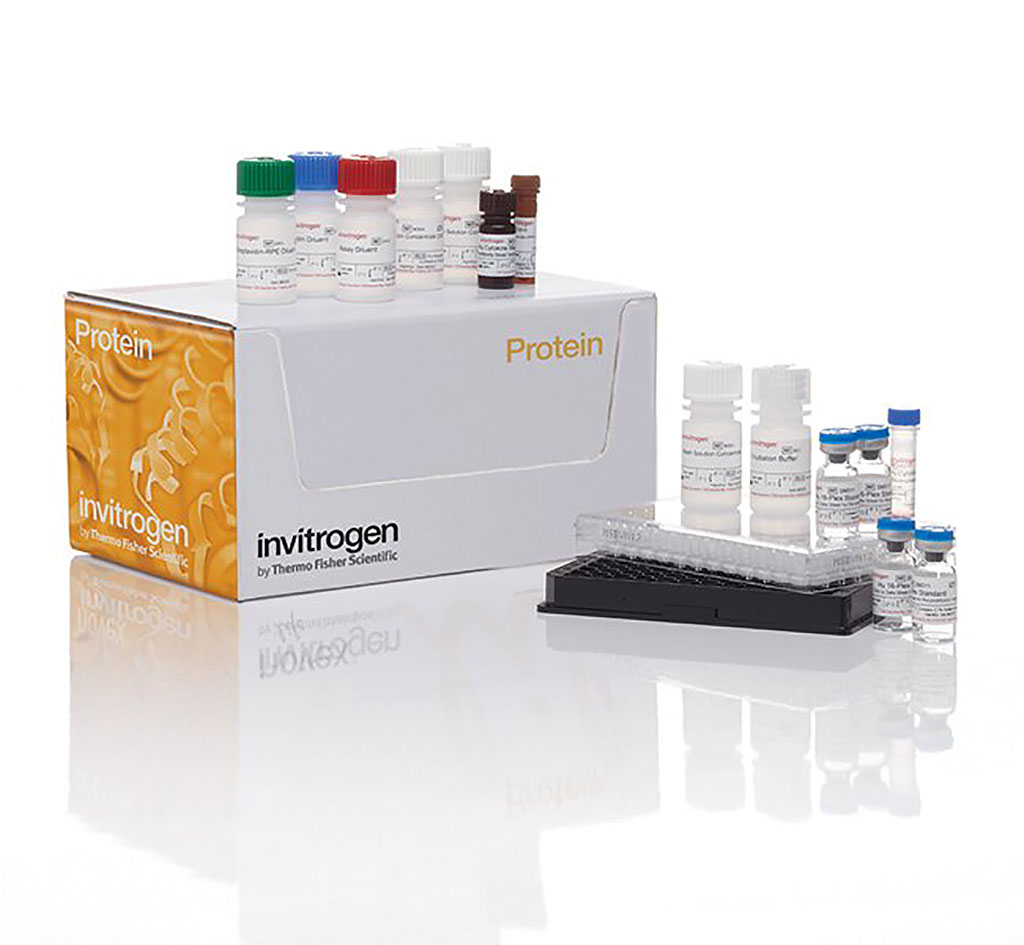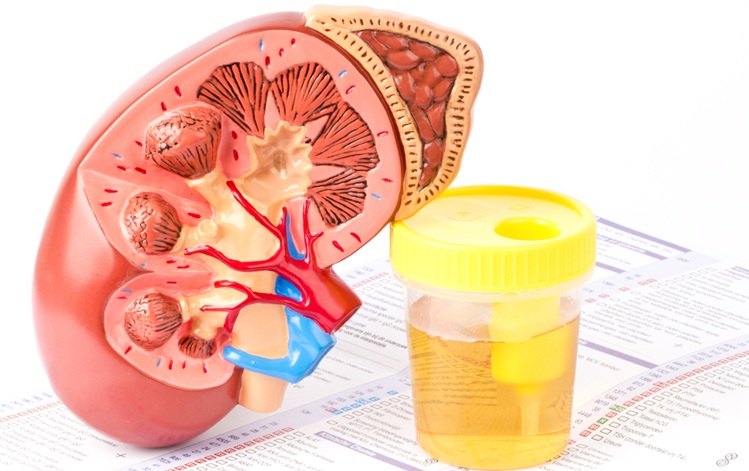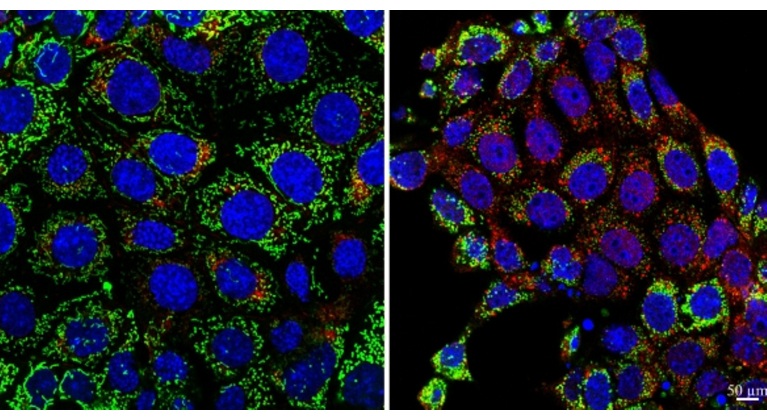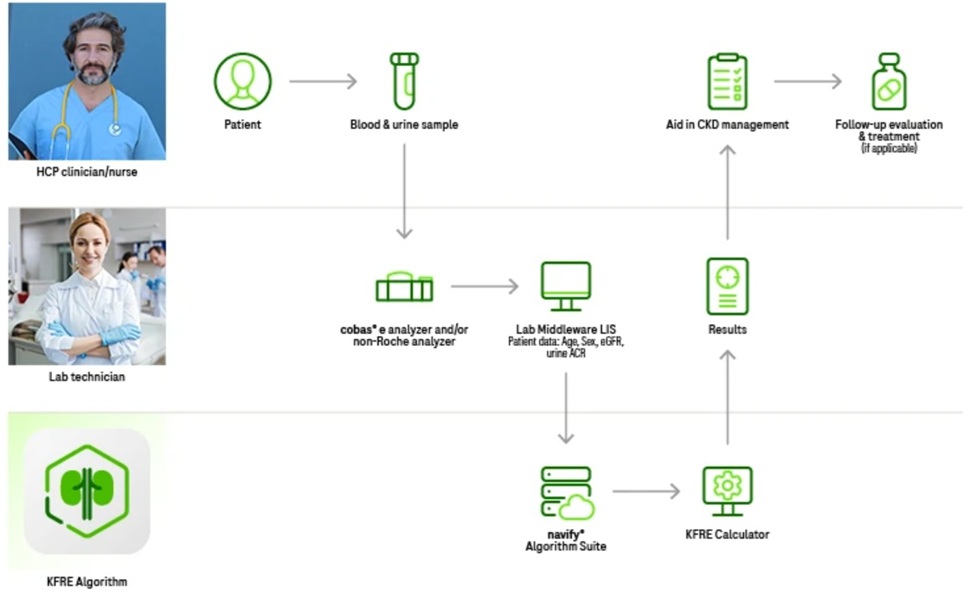Cytokine Signatures of Tertian Malaria Infection Profiled During Pregnancy
|
By LabMedica International staff writers Posted on 27 May 2020 |

Image: The Cytokine Magnetic 30-Plex Panel is specifically designed for quantifying human cytokines, chemokines and growth factors in serum, plasma, and tissue culture supernatant (Photo courtesy of Invitrogen).
Malaria caused by Plasmodium vivax is a neglected tropical disease, especially during pregnancy, of worldwide distribution. P. vivax is a protozoal parasite and a human pathogen. This parasite is the most frequent and widely distributed cause of recurring malaria.
Severe vivax malaria or tertian malaria is associated with inflammatory responses but in pregnancy immune alterations make it uncertain as to what cytokine signatures predominate, and how the type and quantity of blood immune mediators influence delivery outcomes.
Medical scientists at the Hospital Clínic de Barcelona (Barcelona, Spain) and their international colleagues measured the plasma concentrations of a set of thirty-one biomarkers, comprising cytokines, chemokines and growth factors, in 987 plasma samples from a cohort of 572 pregnant women from five malaria-endemic tropical countries and related these concentrations to delivery outcomes (birth weight and hemoglobin levels) and malaria infection.
The biomarkers were analyzed in thawed plasmas with a multiplex suspension detection system Cytokine Magnetic 30-Plex Panel (Invitrogen, Madrid, Spain) which allows the detection of different biomarker. In addition, the cytokine TGF-β1 was analyzed in all plasmas except those from India, with a DuoSet ELISA kit (R&D Systems, Minneapolis, MN, USA). P. vivax and P. falciparum (studied as a possible confounder in co-infected women) parasitaemia were assessed at every visit in Giemsa-stained blood slides that were read onsite. Submicroscopic malaria infections were also determined at enrolment and delivery by real time-PCR in a group of participants, which included the immunological subcohort. Malaria symptoms and hemoglobin (Hb, g/dL) levels were also recorded at enrolment and delivery, as well as neonatal birth weight (g).
The team reported that at recruitment, they found that P. vivax–infected pregnant women had higher plasma concentrations of proinflammatory (IL-6, IL-1β, CCL4, CCL2, CXCL10) and TH1-related cytokines (mainly IL-12) than uninfected women. This biomarker signature was essentially lost at delivery and was not associated with birth weight or hemoglobin levels. Anti-inflammatory cytokines (IL-10) were positively associated with infection and poor delivery outcomes. CCL11 was the only biomarker to show a negative association with P. vivax infection and its concentration at recruitment was positively associated with hemoglobin levels at delivery. Birth weight was negatively associated with peripheral IL-4 levels at delivery.
The authors concluded that their data showed that while TH1 and pro-inflammatory responses are dominant during P. vivax infection in pregnancy, anti-inflammatory cytokines may compensate excessive inflammation avoiding poor delivery outcomes, and skewness toward a TH2 response that may trigger worse delivery outcomes. CCL11, a chemokine largely neglected in the field of malaria, emerges as an important marker of exposure or mediator in this condition. The study was published on May 4, 2020 in the journal PLOS Neglected Tropical Diseases.
Related Links:
Hospital Clínic de Barcelona
Invitrogen
R&D Systems
Severe vivax malaria or tertian malaria is associated with inflammatory responses but in pregnancy immune alterations make it uncertain as to what cytokine signatures predominate, and how the type and quantity of blood immune mediators influence delivery outcomes.
Medical scientists at the Hospital Clínic de Barcelona (Barcelona, Spain) and their international colleagues measured the plasma concentrations of a set of thirty-one biomarkers, comprising cytokines, chemokines and growth factors, in 987 plasma samples from a cohort of 572 pregnant women from five malaria-endemic tropical countries and related these concentrations to delivery outcomes (birth weight and hemoglobin levels) and malaria infection.
The biomarkers were analyzed in thawed plasmas with a multiplex suspension detection system Cytokine Magnetic 30-Plex Panel (Invitrogen, Madrid, Spain) which allows the detection of different biomarker. In addition, the cytokine TGF-β1 was analyzed in all plasmas except those from India, with a DuoSet ELISA kit (R&D Systems, Minneapolis, MN, USA). P. vivax and P. falciparum (studied as a possible confounder in co-infected women) parasitaemia were assessed at every visit in Giemsa-stained blood slides that were read onsite. Submicroscopic malaria infections were also determined at enrolment and delivery by real time-PCR in a group of participants, which included the immunological subcohort. Malaria symptoms and hemoglobin (Hb, g/dL) levels were also recorded at enrolment and delivery, as well as neonatal birth weight (g).
The team reported that at recruitment, they found that P. vivax–infected pregnant women had higher plasma concentrations of proinflammatory (IL-6, IL-1β, CCL4, CCL2, CXCL10) and TH1-related cytokines (mainly IL-12) than uninfected women. This biomarker signature was essentially lost at delivery and was not associated with birth weight or hemoglobin levels. Anti-inflammatory cytokines (IL-10) were positively associated with infection and poor delivery outcomes. CCL11 was the only biomarker to show a negative association with P. vivax infection and its concentration at recruitment was positively associated with hemoglobin levels at delivery. Birth weight was negatively associated with peripheral IL-4 levels at delivery.
The authors concluded that their data showed that while TH1 and pro-inflammatory responses are dominant during P. vivax infection in pregnancy, anti-inflammatory cytokines may compensate excessive inflammation avoiding poor delivery outcomes, and skewness toward a TH2 response that may trigger worse delivery outcomes. CCL11, a chemokine largely neglected in the field of malaria, emerges as an important marker of exposure or mediator in this condition. The study was published on May 4, 2020 in the journal PLOS Neglected Tropical Diseases.
Related Links:
Hospital Clínic de Barcelona
Invitrogen
R&D Systems
Latest Immunology News
- Blood-Based Liquid Biopsy Model Analyzes Immunotherapy Effectiveness
- Signature Genes Predict T-Cell Expansion in Cancer Immunotherapy
- Molecular Microscope Diagnostic System Assesses Lung Transplant Rejection
- Blood Test Tracks Treatment Resistance in High-Grade Serous Ovarian Cancer
- Luminescent Probe Measures Immune Cell Activity in Real Time
- Blood-Based Immune Cell Signatures Could Guide Treatment Decisions for Critically Ill Patients
- Novel Tool Predicts Most Effective Multiple Sclerosis Medication for Patients
- Companion Diagnostic Test for CRC Patients Identifies Eligible Treatment Population
- Novel Tool Uses Deep Learning for Precision Cancer Therapy
- Companion Diagnostic Test Identifies HER2-Ultralow Breast Cancer and Biliary Tract Cancer Patients
- Novel Multiplex Assay Supports Diagnosis of Autoimmune Vasculitis
- Blood Test Predicts Immunotherapy Efficacy in Triple-Negative Breast Cancer
- Simple Genetic Testing Could Predict Treatment Success in Multiple Sclerosis Patients
- Novel Gene Signature Predicts Immunotherapy Response in Advanced Kidney Cancers
- New Technology Deciphers Immune Cell Communication to Predict Immunotherapy Response
- AI Model Accurately Predicts MSI Tumor and Immune Checkpoint Inhibitor Responsiveness
Channels
Clinical Chemistry
view channel
VOCs Show Promise for Early Multi-Cancer Detection
Early cancer detection is critical to improving survival rates, but most current screening methods focus on individual cancer types and often involve invasive procedures. This makes it difficult to identify... Read more
Portable Raman Spectroscopy Offers Cost-Effective Kidney Disease Diagnosis at POC
Kidney disease is typically diagnosed through blood or urine tests, often when patients present with symptoms such as blood in urine, shortness of breath, or weight loss. While these tests are common,... Read moreMolecular Diagnostics
view channel
Genomic Test Could Reduce Lymph Node Biopsy Surgery in Melanoma Patients
Accurately determining whether melanoma has spread to the lymph nodes is crucial for guiding treatment decisions, yet the standard procedure—sentinel lymph node biopsy—remains invasive, costly, and unnecessary... Read more
Urine Test Could Replace Painful Kidney Biopsies for Lupus Patients
Lupus is an autoimmune disorder that causes the immune system to attack the body’s own tissues and organs. Among the five million people living with lupus globally, nearly half develop lupus nephritis,... Read more
Blood Test Guides Post-Surgical Immunotherapy for Muscle-Invasive Bladder Cancer
After surgery for muscle-invasive bladder cancer, many patients face uncertainty about whether residual cancer cells remain in their bodies. Now, a new international phase 3 study has demonstrated that... Read more
Mitochondrial DNA Mutations from Kidney Stressors Could Predict Future Organ Decline
Kidney-related diseases are alarmingly common: chronic kidney disease (CKD) affects more than one in seven U.S. adults, while about 20% of hospitalized adults are diagnosed with acute kidney injury (AKI).... Read moreHematology
view channel
Viscoelastic Testing Could Improve Treatment of Maternal Hemorrhage
Postpartum hemorrhage, severe bleeding after childbirth, remains one of the leading causes of maternal mortality worldwide, yet many of these deaths are preventable. Standard care can be hindered by delays... Read more
Pioneering Model Measures Radiation Exposure in Blood for Precise Cancer Treatments
Scientists have long focused on protecting organs near tumors during radiotherapy, but blood — a vital, circulating tissue — has largely been excluded from dose calculations. Each blood cell passing through... Read more
Platelets Could Improve Early and Minimally Invasive Detection of Cancer
Platelets are widely recognized for their role in blood clotting and scab formation, but they also play a crucial role in immune defense by detecting pathogens and recruiting immune cells.... Read more
Portable and Disposable Device Obtains Platelet-Rich Plasma Without Complex Equipment
Platelet-rich plasma (PRP) plays a crucial role in regenerative medicine due to its ability to accelerate healing and repair tissue. However, obtaining PRP traditionally requires expensive centrifugation... Read moreMicrobiology
view channel
Fast Noninvasive Bedside Test Uses Sugar Fingerprint to Detect Fungal Infections
Candida bloodstream infections are a growing global health threat, causing an estimated 6 million cases and 3.8 million deaths annually. Hospitals are particularly vulnerable, as weakened patients after... Read more
Rapid Sepsis Diagnostic Device to Enable Personalized Critical Care for ICU Patients
Sepsis is a life-threatening condition that occurs when the body’s response to infection spirals out of control, damaging organs and leading to critical illness. Patients often arrive at intensive care... Read morePathology
view channel
Tears Offer Noninvasive Alternative for Diagnosing Neurodegenerative Diseases
Diagnosing and monitoring eye and neurodegenerative diseases often requires invasive procedures to access ocular fluids. Ocular fluids like aqueous humor and vitreous humor contain valuable molecular information... Read more
AI-Powered Method Combines Blood Data to Accurately Measure Biological Age
Chronological age tells us how many years we’ve lived, but not how quickly our bodies are ageing. Some people stay healthy well into their 80s or 90s, while others experience decline much earlier.... Read moreTechnology
view channel
Embedded GPU Platform Enables Rapid Blood Profiling for POC Diagnostics
Blood tests remain a cornerstone of medical diagnostics, but traditional imaging and analysis methods can be slow, costly, and reliant on dyes or contrast agents. Now, scientists have developed a real-time,... Read more
Viral Biosensor Test Simultaneously Detects Hepatitis and HIV
Globally, over 300 million people live with Hepatitis B and C, and 40 million with HIV, according to WHO estimates. Diagnosing bloodborne viruses such as HIV and Hepatitis B and C remains challenging in... Read moreIndustry
view channel
Advanced Instruments Merged Under Nova Biomedical Name
Advanced Instruments (Norwood, MA, USA) and Nova Biomedical (Waltham, MA, USA) are now officially doing business under a single, unified brand. This transformation is expected to deliver greater value... Read more



















